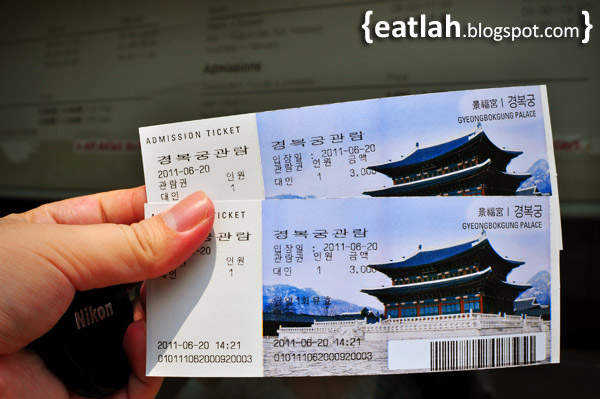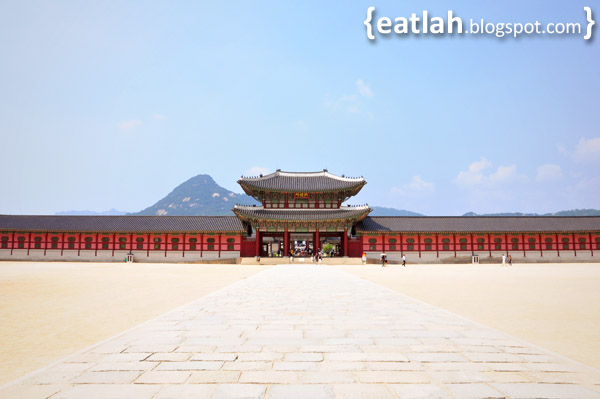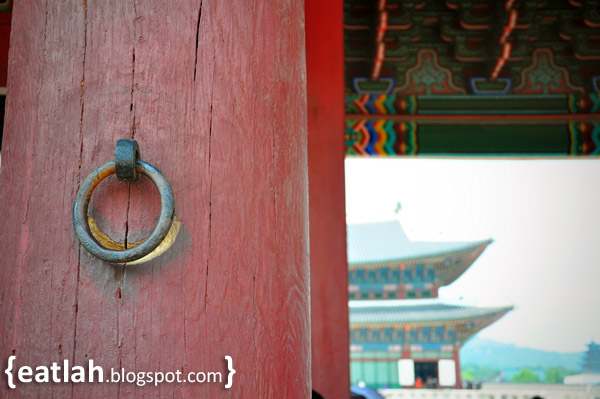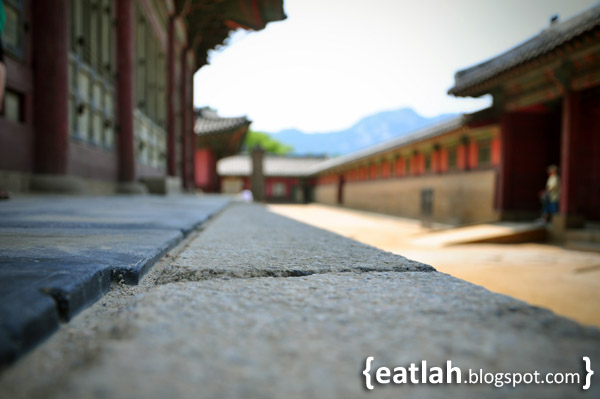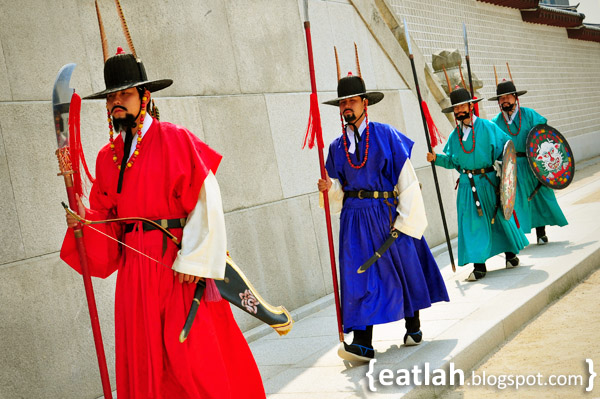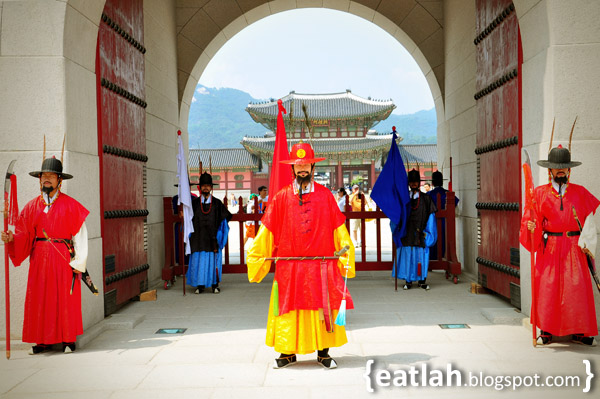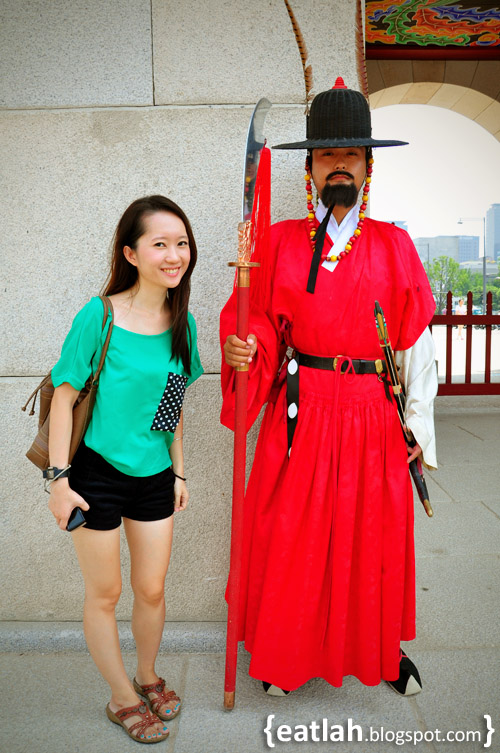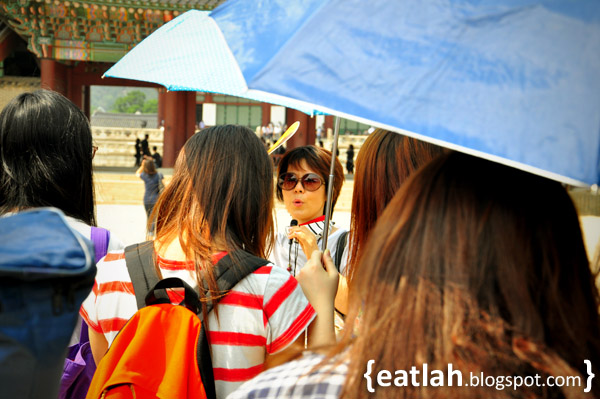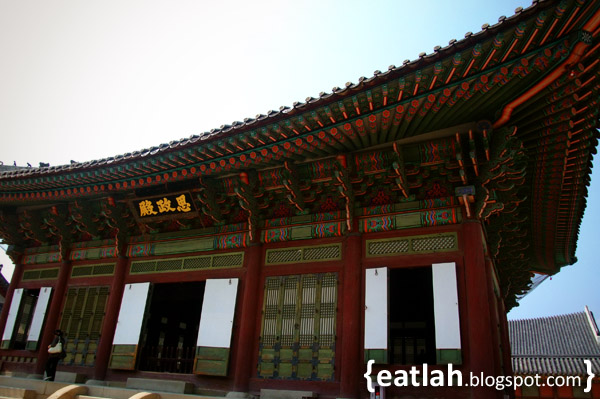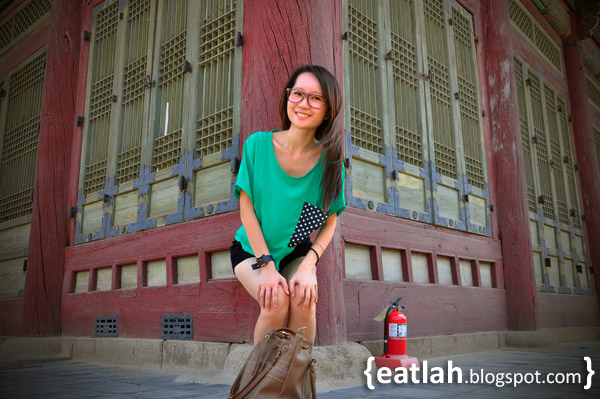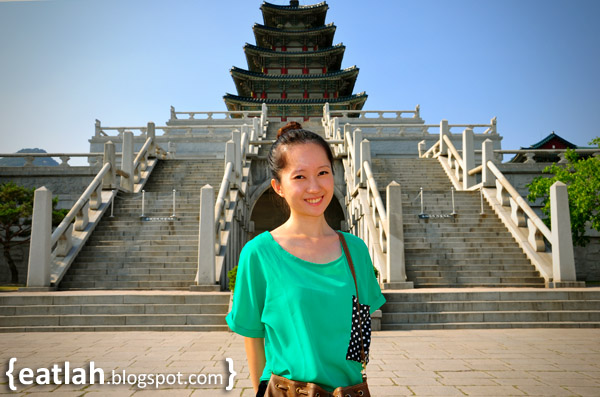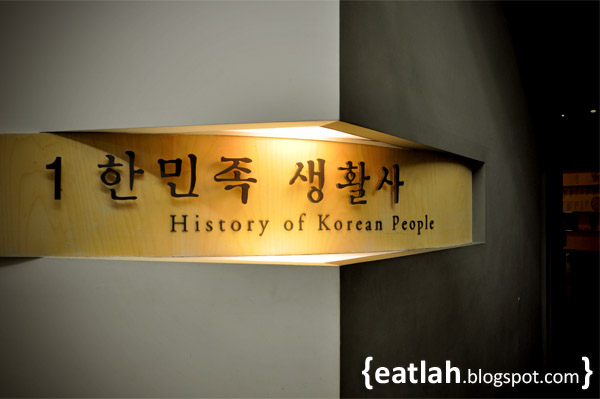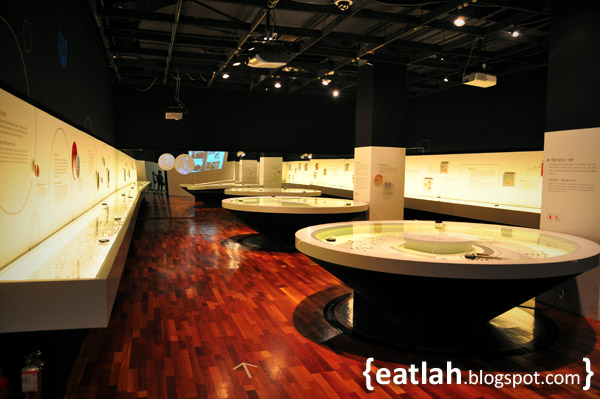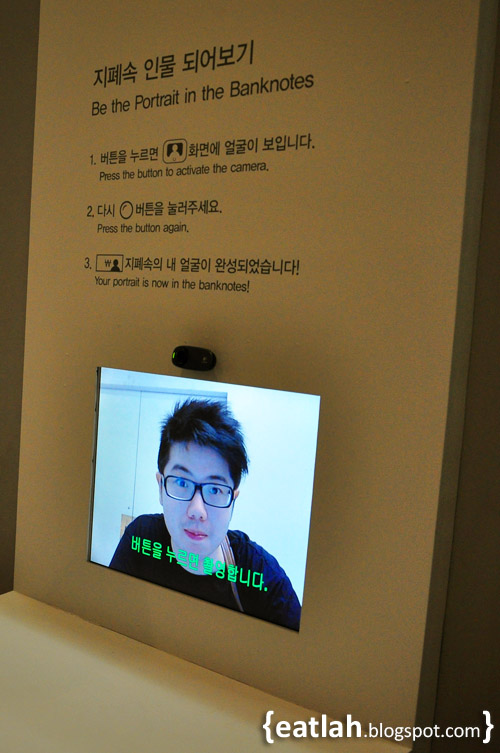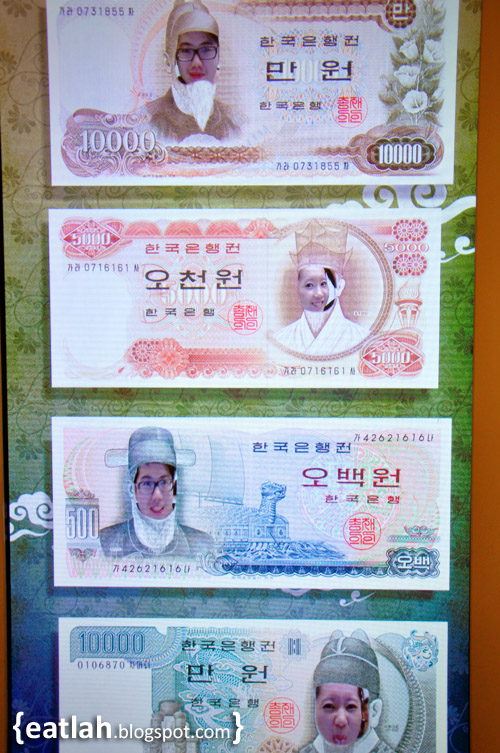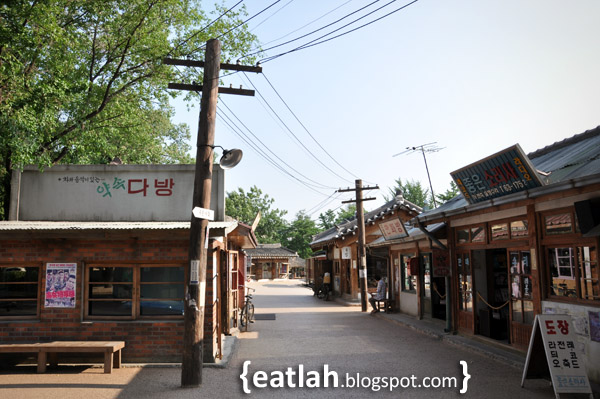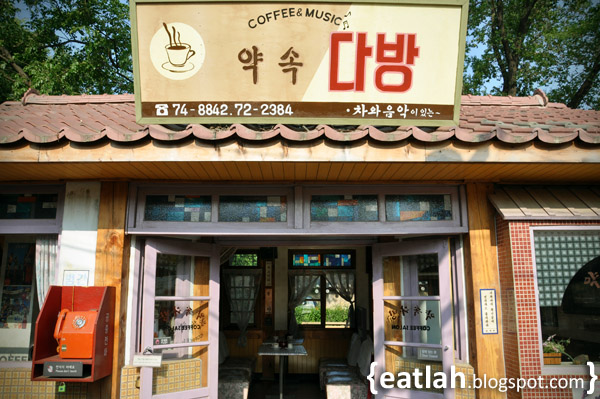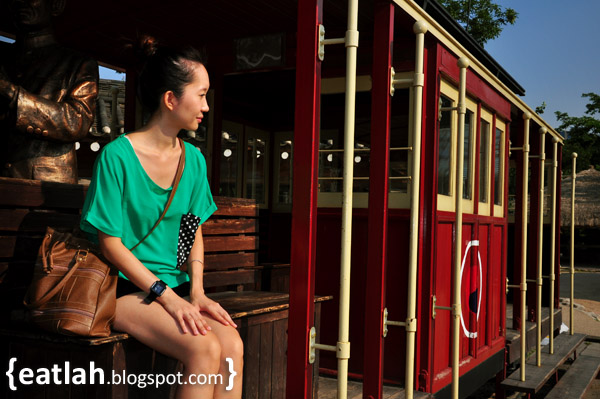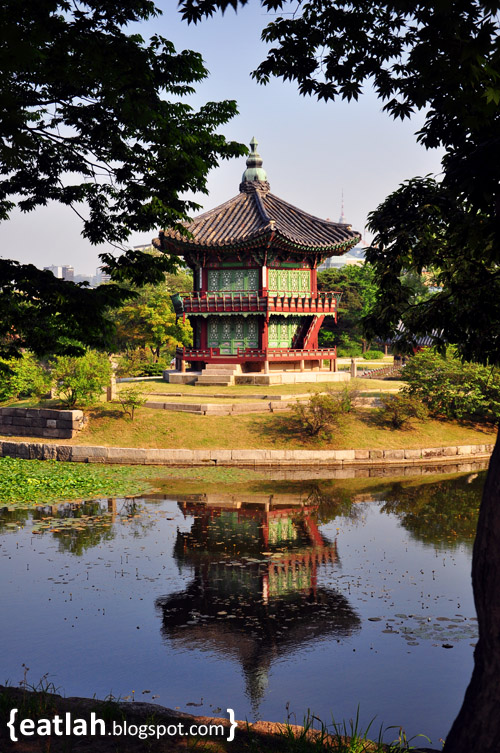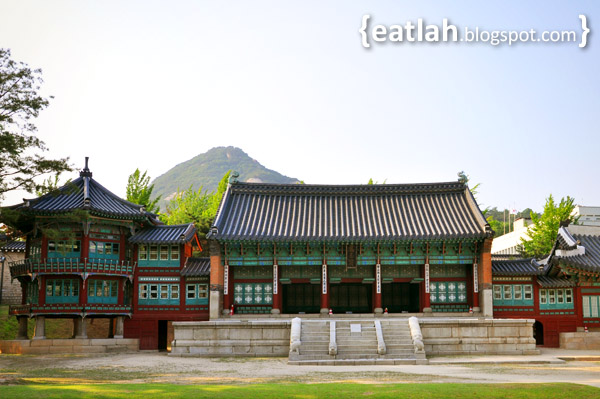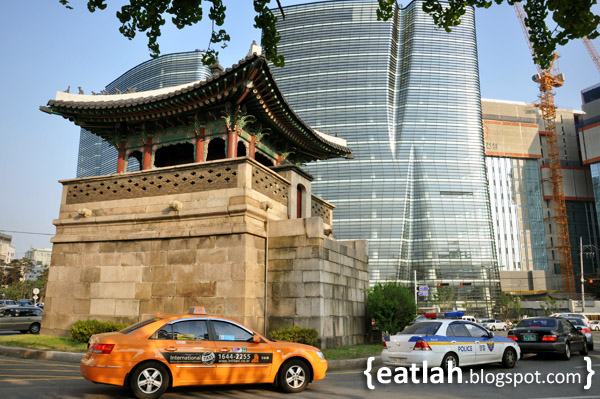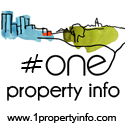
Restaurant Mei Six Hin (美食轩) is a newly opened Chinese restaurant located at Prima Sri Gombak in Batu Caves and the result of many years of hard work by Chef Steven Cheng and his wife.

Chef Steven Cheng brings his passion of cooking back to the tables with many years of vast experience from various top Chinese restaurants. Even celebrities from Hong Kong like Eric Tsang (曾志偉) had quietly made a table reservation for Chef Steven's private cooking.

First to arrive was a large hotpot casserole Poon Choi (盆菜, RM 168 for small / RM 268 for large) and we were gripped with excitement as we opened the lid.

Poon choi, pun choi, poon choy) is a traditional communal banquet dish served in a huge tub and often eaten during festivals. Preparing poon choi is a tedious process; from steaming to deep frying, pan grilling, poaching, roasting, braising and then carefully layered to achieve the synergy between the layers of ingredients.


This wonderful one-pot feast is stuffed with chock-full of decadent treasures such as roast pork, roast duck, steamed chicken, scallops, sweet and spicy prawns, sea cucumbers, fish maw, dried oysters, pork trotters, mushrooms and "abalone" slices. For those who prefers a more lavish ingredients with real abalone, it will be RM 250 for small or RM 500 for large.

We asked for white rice as the glorified gravy was simply irresistible!

A definite must-have dish from Chef Steven, the Shanghai Style Dried Chili Chicken (RM 15/20/30, 上海辣子鸡). These delicious deep-fried chicken pieces melded with the intense aroma of the wok and the spicy heat from the dried chilies. It was so good that we had to order another plate as the first one was polished off within minutes!

Pork Ribs with Italian Sauce (RM 18/30/45, 香草排骨), the slices of pork ribs were surprisingly tender and coated with a balance of sweet and sour sauce seasoned with fragrant Italian herbs.

Garoupa Rolls in Supreme Broth (RM 18/30, 麒麟斑片), steamed thick garoupa slices wrapped with crunchy snow peas and dressed with a golden supreme broth. Generally, fresh deep sea garoupa fish has a firm meaty texture and delicate flavor. The nicely thickened supreme broth was not overpowering but a little mild for my preference.

A newly created dish from Chef Steven, the Steamed Lotus Leaf with Chicken and Chinese Ham (RM 18, 荷叶云腿鸡). The lotus leaf helps in preserving the moist and flavors of the wrapped marinated chicken, mushroom and Jin Hua ham (金華火腿). Besides that, it imbues an earthy aroma and imparts it to the wrapped chicken.

The moment the wrapped leaf was opened, we could almost "see" the flavors rising up. According to Chef Steven, a thin slice of expensive Jinhua ham was used to lend a faint smoky saltiness to the wrapped ingredients. It's like the Chinese's version of jamón ibérico ham from Spain!
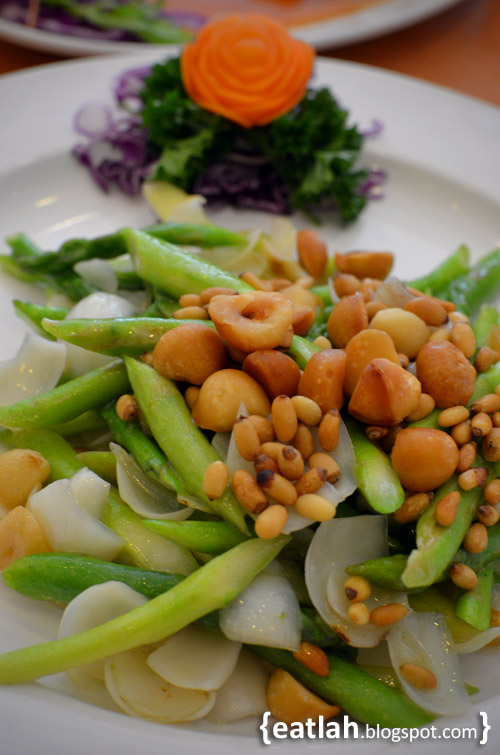
Stir Fried Asparagus with Lily Bulb, Pine Nuts and Macadamia (RM 12/18/25, 佛门正果), it was a vibrant medley of flavors with a splash of crunchy nutty taste.

Yet another signature dish from Chef Steven, the Salt Baked Tilapia Fish (RM 25) or also known as "Suet San Fei Wu" (雪山飞狐, The Flying Fox of Snowy Mountain) as the fish was covered with salt resembling a white snowy mountain. It was funny, shouldn't it be "Suet San Fei Yu" (雪山飞鱼, The Flying Fish of Snowy Mountain) instead?

The salt absorbs the heat and turns into a hard crust that seals in the flavor and moisture without making the fish tastes overly salty. It took about 45 minutes to bake this fish over the wok with slow heat till perfection.

The fish was also stuffed with chopped chili, ginger, shallot, garlic and some dong quai to give a delightful fragrant to the fish. It was the best salt baked fish we've ever eaten!

During meals, we toasted almost continuously with glasses being clanked to shouts of ganbei. Instead of the usual Western wines that get all the attention these days, we opted for traditional Chinese wines that are often neglected. Chinese food with Chinese wines, that's the way it should be!

Aged Shaoxing Rice Wine (绍兴花雕酒) is one of the oldest Chinese wine with a history of over 2,400 years from China. For several thousand years this has been the preferred alcoholic beverage of the Chinese and widely used in Chinese cuisine. This amber-colored wine with 16.5% alcohol content emits an enchanting aroma that warms up our stomach and invigorates blood circulation. I became "red" instantly.

The next wine we had was Kuei Hua Chen Chiew (桂花陈酒). Made from well-chosen flowers in bud, it was sweet, light and refreshing. This will be particularly popular with young adults and women.

Meal hats off and compliments to Chef Steven Cheng and his wife, Winnie. They are such humble and fantastic host!
Verdict: Restaurant Mei Six Hin is a hidden treasure for those seeking for scrumptious classy Chinese cuisine. Most of his dishes were well executed and we're definitely going back to Chef Steven Cheng for more of his creations soon!
Address:
G-62, Jalan Prima SG 3/1,
Prima Sri Gombak,
68100 Selangor
Tel: 012-359 3109 (Steven) / 017-279 9927 (Winnie)
Business Hours: Opens daily for lunches and dinners. Close every fortnight Monday.
Pork Free: No
Taste:



Value:



GPS: 3.238211, 101.701179
Map:
View Eat Lah Food Map in a larger map

First to arrive was a large hotpot casserole Poon Choi (盆菜, RM 168 for small / RM 268 for large) and we were gripped with excitement as we opened the lid.

Poon choi, pun choi, poon choy) is a traditional communal banquet dish served in a huge tub and often eaten during festivals. Preparing poon choi is a tedious process; from steaming to deep frying, pan grilling, poaching, roasting, braising and then carefully layered to achieve the synergy between the layers of ingredients.


This wonderful one-pot feast is stuffed with chock-full of decadent treasures such as roast pork, roast duck, steamed chicken, scallops, sweet and spicy prawns, sea cucumbers, fish maw, dried oysters, pork trotters, mushrooms and "abalone" slices. For those who prefers a more lavish ingredients with real abalone, it will be RM 250 for small or RM 500 for large.

We asked for white rice as the glorified gravy was simply irresistible!

A definite must-have dish from Chef Steven, the Shanghai Style Dried Chili Chicken (RM 15/20/30, 上海辣子鸡). These delicious deep-fried chicken pieces melded with the intense aroma of the wok and the spicy heat from the dried chilies. It was so good that we had to order another plate as the first one was polished off within minutes!

Pork Ribs with Italian Sauce (RM 18/30/45, 香草排骨), the slices of pork ribs were surprisingly tender and coated with a balance of sweet and sour sauce seasoned with fragrant Italian herbs.

Garoupa Rolls in Supreme Broth (RM 18/30, 麒麟斑片), steamed thick garoupa slices wrapped with crunchy snow peas and dressed with a golden supreme broth. Generally, fresh deep sea garoupa fish has a firm meaty texture and delicate flavor. The nicely thickened supreme broth was not overpowering but a little mild for my preference.

A newly created dish from Chef Steven, the Steamed Lotus Leaf with Chicken and Chinese Ham (RM 18, 荷叶云腿鸡). The lotus leaf helps in preserving the moist and flavors of the wrapped marinated chicken, mushroom and Jin Hua ham (金華火腿). Besides that, it imbues an earthy aroma and imparts it to the wrapped chicken.

The moment the wrapped leaf was opened, we could almost "see" the flavors rising up. According to Chef Steven, a thin slice of expensive Jinhua ham was used to lend a faint smoky saltiness to the wrapped ingredients. It's like the Chinese's version of jamón ibérico ham from Spain!

Stir Fried Asparagus with Lily Bulb, Pine Nuts and Macadamia (RM 12/18/25, 佛门正果), it was a vibrant medley of flavors with a splash of crunchy nutty taste.

Yet another signature dish from Chef Steven, the Salt Baked Tilapia Fish (RM 25) or also known as "Suet San Fei Wu" (雪山飞狐, The Flying Fox of Snowy Mountain) as the fish was covered with salt resembling a white snowy mountain. It was funny, shouldn't it be "Suet San Fei Yu" (雪山飞鱼, The Flying Fish of Snowy Mountain) instead?

The salt absorbs the heat and turns into a hard crust that seals in the flavor and moisture without making the fish tastes overly salty. It took about 45 minutes to bake this fish over the wok with slow heat till perfection.

The fish was also stuffed with chopped chili, ginger, shallot, garlic and some dong quai to give a delightful fragrant to the fish. It was the best salt baked fish we've ever eaten!

During meals, we toasted almost continuously with glasses being clanked to shouts of ganbei. Instead of the usual Western wines that get all the attention these days, we opted for traditional Chinese wines that are often neglected. Chinese food with Chinese wines, that's the way it should be!

Aged Shaoxing Rice Wine (绍兴花雕酒) is one of the oldest Chinese wine with a history of over 2,400 years from China. For several thousand years this has been the preferred alcoholic beverage of the Chinese and widely used in Chinese cuisine. This amber-colored wine with 16.5% alcohol content emits an enchanting aroma that warms up our stomach and invigorates blood circulation. I became "red" instantly.

The next wine we had was Kuei Hua Chen Chiew (桂花陈酒). Made from well-chosen flowers in bud, it was sweet, light and refreshing. This will be particularly popular with young adults and women.

Meal hats off and compliments to Chef Steven Cheng and his wife, Winnie. They are such humble and fantastic host!
Verdict: Restaurant Mei Six Hin is a hidden treasure for those seeking for scrumptious classy Chinese cuisine. Most of his dishes were well executed and we're definitely going back to Chef Steven Cheng for more of his creations soon!
Address:
G-62, Jalan Prima SG 3/1,
Prima Sri Gombak,
68100 Selangor
Tel: 012-359 3109 (Steven) / 017-279 9927 (Winnie)
Business Hours: Opens daily for lunches and dinners. Close every fortnight Monday.
Pork Free: No
Taste:




Value:




GPS: 3.238211, 101.701179
Map:
View Eat Lah Food Map in a larger map

